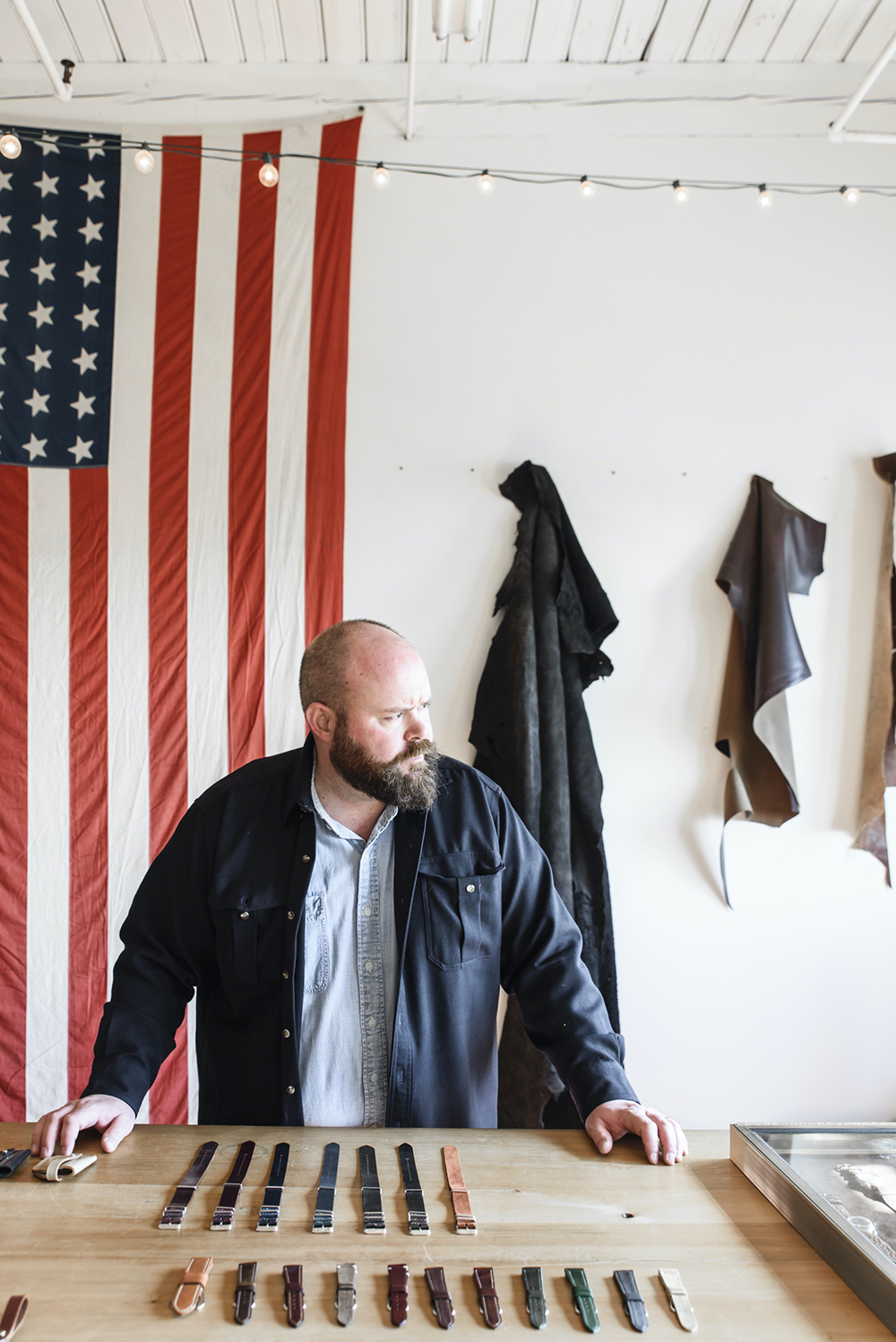
The Hungerford Building in Rochester, New York is a sprawling, four-story industrial center that overlooks a train yard. A hundred years ago, it was the home of the J. Hungerford Smith Company, an American manufacturer for soda fountain flavoring syrups. They were known for their “true fruit” formulations, such as Cherry Chic, Golden Orangeade, and the licorice, aged vanilla flavor that goes into A&W’s root beer. At one point, they were one of the largest employers in Rochester, but the company hasn’t been based here in many decades. In 1963, they moved out of their longtime home and eventually relocated to Tennesse, after which they were acquired by Conagra. At the Rochester building that still bears their name, you’ll no longer find whizzing, humming machines that produce flavoring syrups, but a community of artists, craftspeople, and small businesses.
David Lane Design is one of those small businesses. Tucked away in one of these red-brick buildings is their modest, one-room workshop. This space is neatly organized with workbenches and heavy tables, which hold an array of leatherworking tools. There are pricking irons, mallets, edgers, awls, waxed threads, and needles; a wooden clamp for securing leather while it’s being handsewn; a leather strop for sharpening blades. The most complicated tool here is sitting in the back of the workshop. It’s a clicker press with a swing arm and a white sticker plastered on the side that shouts “MIGHTY WONDER.”
David DeMarte, the company’s founder and sole craftsperson, works here. He transforms leather hides from Italy, France, and the United States into beautifully crafted watch straps, handbags, belts, and wallets using a time-honored technique known as saddle stitching. This is the same technique that leatherworkers at Hermes use to craft their fine leather accessories. In this tradition, a craftsperson first punches holes into the leather with a pricking iron before threading two needles through with a careful pace and repetition. One needle enters from the left and another from the right, with the craftsperson repeatedly stretching their arms like how a bird stretches its wings. The result is a tighter, more secure seam than what can be achieved with a machine-sewn lockstitch. Whereas a lockstitch can unravel if one part breaks, a saddle stitch has to be picked apart using a special tool. In an interview with local news station WHEC, David describes his leather goods as “heirloom quality.”
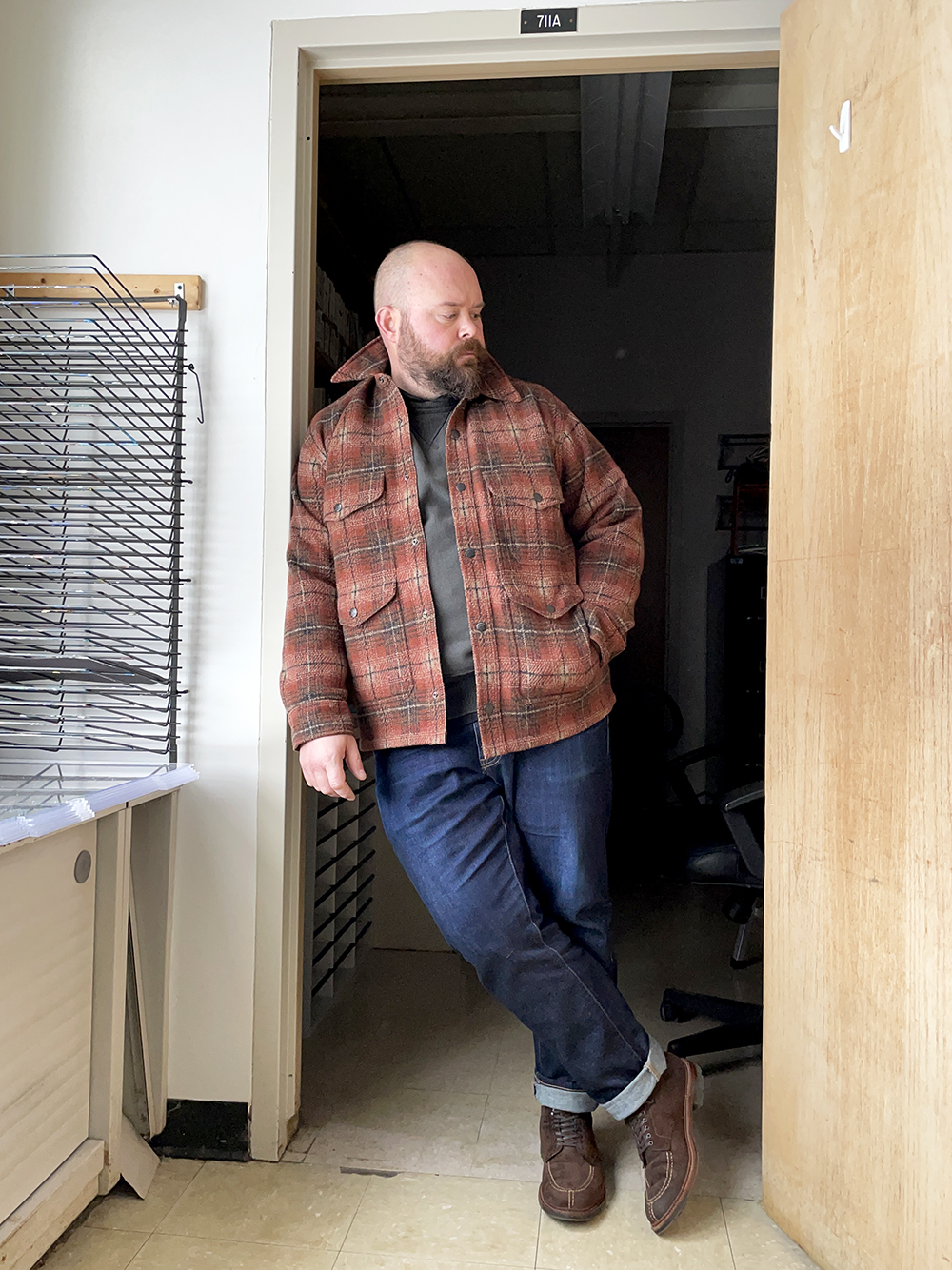

I occasionally email David for his opinion when I’m thinking about purchasing a watch. With over fifteen years of experience in making watch straps, he’s seen a lot of quality timepieces. He’s also been passionate about watches for even longer than he’s been a craftsman (his first straps were sold at Paneristi, a Panerai enthusiast forum where he’s been a member since 2007). Additionally, I admire his style and approach to clothing. Many men interested in style are obsessed with just one type of item — watches, shoes, jeans, fragrances, or tailored suits. These niche-within-a-niche subcultures are often very inward-looking, such that guys will debate the minutia related to mechanical movements, Goodyear welting, or handsewn buttonholes, but not how these items should relate to a broader wardrobe.
David, on the other hand, is always thinking about the bigger picture. When purchasing a watch, he thinks about how the design fits into his lifestyle and wardrobe. Next to his Shetland tweeds and navy sport coats, he has more casual clothes, such as patched-up jeans, heavy cardigans, chambray shirts, and chore coats. When put together in outfits, all these items work together in concert — sleek loafers are worn with tailored trousers, work boots with jeans, and suede chukkas with smart-casual ensembles. Best of all, his choices suit him in terms of cut, personality, and lifestyle. He has clothes for the different sections of his life — tailoring for his work as a high school educator, workwear when he’s crafting leather goods. It’s what I would describe as a holistic wardrobe.
There are two distinct sides to David’s wardrobe, tailored and casual, although they’re designed so that the clothes can be easily mixed. David started seriously getting into tailored clothing around the time when he launched his leather goods business. By his own characterization, he didn’t have a lot of money back then, so he started shopping for ready-to-wear and made-to-measure. The clothes were a bit hit and miss until David started using bespoke tailors, which is when he began hitting his stride. “I learned about silhouette and drape, the benefits of a high armhole, and why the details are much less important than fit,” he says. “Not just the fit but creating the best version of me in clothes.”
These days, David relies on New York tailors Franco Ercole and Frank Shattuck for his suits and sport coats, and then CEGO for his dress shirts. During the fall and winter months, he often reaches for his Shetland tweeds, particularly one made from a gun club cloth he bought from the tailoring enthusiast forum London Lounge. David wears them with dark jeans, heavy flannels, oxford cloth button-downs, denim shirts, suede chukkas, and shell cordovan loafers. In the warmer months, he swaps the tweeds out for inky blue hopsack and Fresco sport coats, which he pairs with grey tropical wool trousers, linen-cotton chambray shirts, striped button-ups, unlined suede loafers, and black tassel loafers. In the photos above, you can see him wear some of these items to his job as a high school art teacher, a subject he’s been teaching for twenty years.
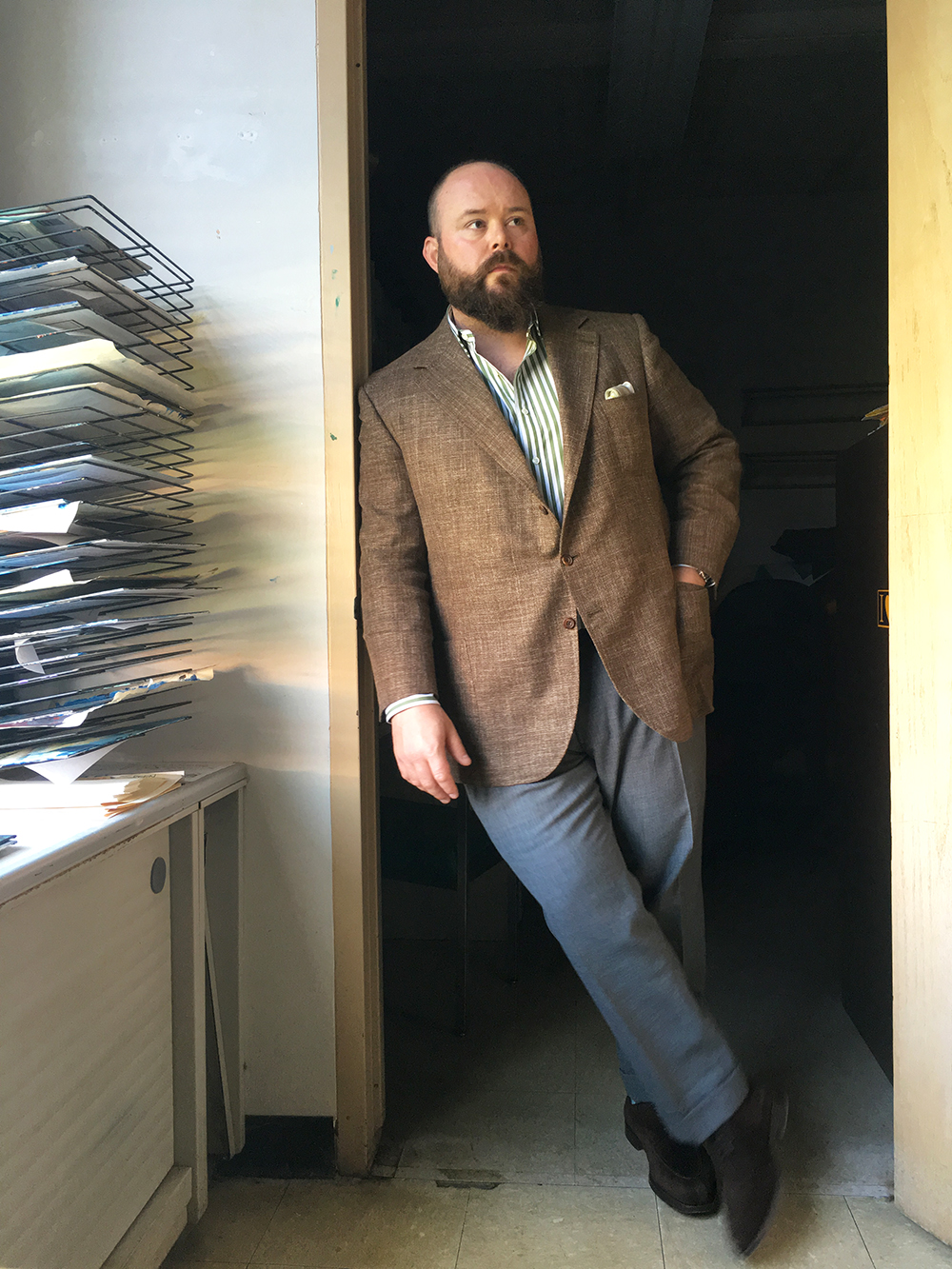

Like most men, David prefers a slightly softer shoulder line, but his shoulder construction isn’t so soft that it’s mushy. A lot of modern tailoring is trim, short, and uber-soft, such that there’s little to no padding in the shoulder line. With such little construction underneath, the jacket does little but recreate your natural body’s shape. By contrast, David’s coats have a silhouette of their own — a tiny bit of fullness in the chest, curved fronts, and sensible, middle-of-the-road proportions. “Frank Shattuck is the only tailor I have found that shapes the bottom of the coat below the waist, which curves in past my stomach to create a leaner look from the profile,” David says. “It’s not much, but you can’t unsee it once you notice it.”
The casual side of his wardrobe is mainly made of trad items from O’Connell’s and stylish workwear items from upscale labels such as RRL. “In leatherworking, I am constantly using glues, dies, and blades,” he explains. “With workwear, if I cut something or stain my jeans or shirt, I can patch it, and it just looks natural, sometimes even better. They also last longer than dress clothes, which never look good with stains or holes.” When David is heading to the workshop, he’s often in jeans, flannels, or five-pocket cords, sometimes paired with an O’Connell’s Shetland or RRL shawl collar cardigan for warmth. On his Instagram, you can see how he creates simple, but stylish outfits by layering chamois shirts over henleys and chunky Southwestern-style cardigans over flannels. His casual shoes include sneakers, work boots, and ropers.
In the outfits above, you can see how he creates coherent outfits by pairing dressier suede shoes with grey tailored trousers and a brown wool-silk-linen sport coat (the touch of spring green in the shirt is a nice touch), while casual ensembles consist of heavy work shirts, thick outer layers, raw denim jeans, and rounder work boots. Notice how everything comes together to create a message. While David occasionally mixes dressy items with casual (e.g. jeans with a sport coat), the pieces are carefully chosen so the outfits are harmonious. If David wore a pair of dressier shoes with the suede chore coat outfit above, it would ruin the look.
“It’s important to me to feel comfortable,” he says. “If I feel like I’m trying too hard or in a costume, I’ll change clothes and pull the reins a bit. Not for the sake of others, but for myself, as I want to feel comfortable in what I’m wearing. I’ve tried to build my wardrobe with this in mind. I keep most of my tailoring tame in terms of color, and try to use casual, textured fabrics such as tweed. That way, I wear things interchangeably with jeans or flannel shirts. From there, I try adding layers and different accessories, such as hats or scarves. Layering is a great way to add some visual interest, but on a bigger frame like mine, it’s important not to add too much.”
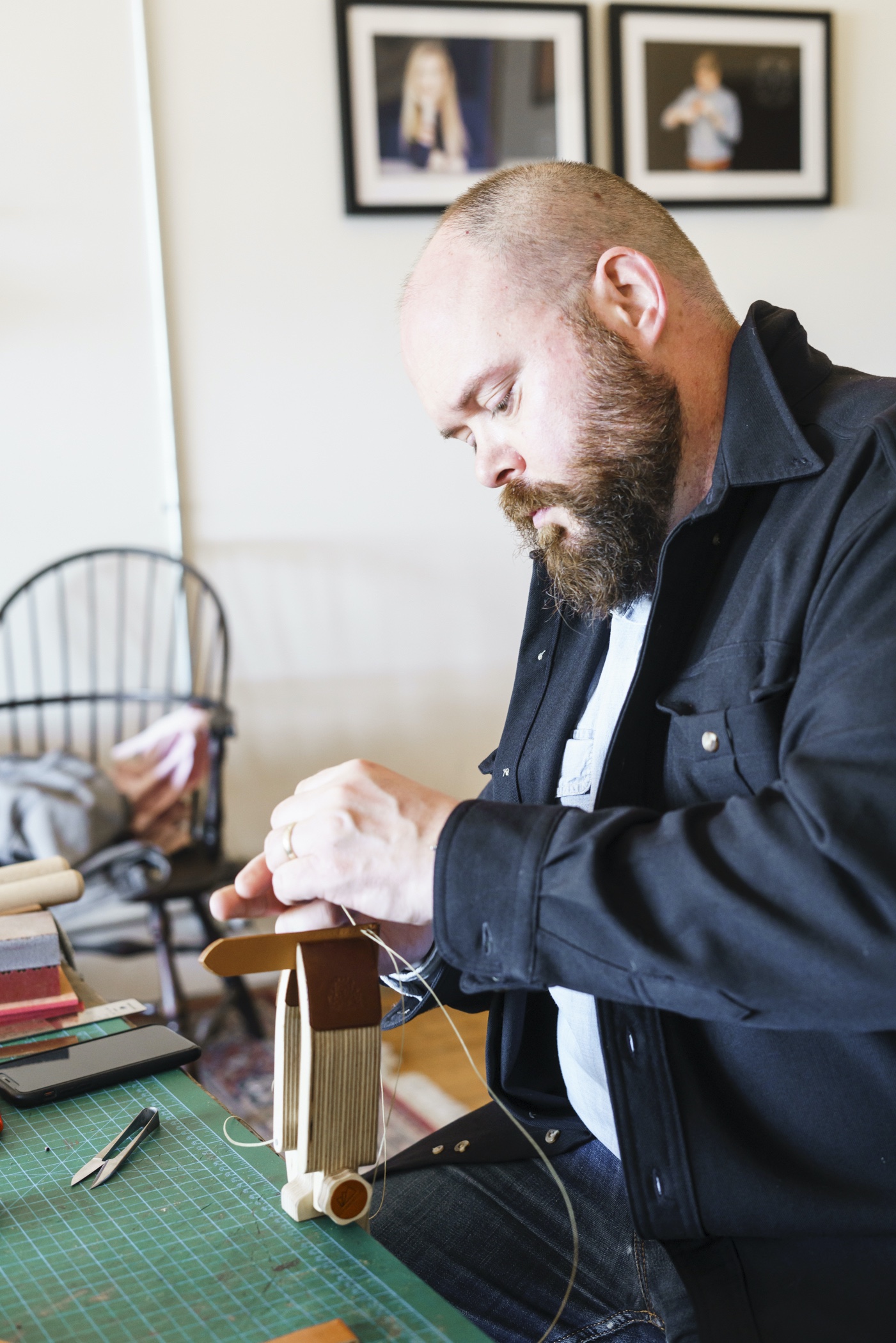
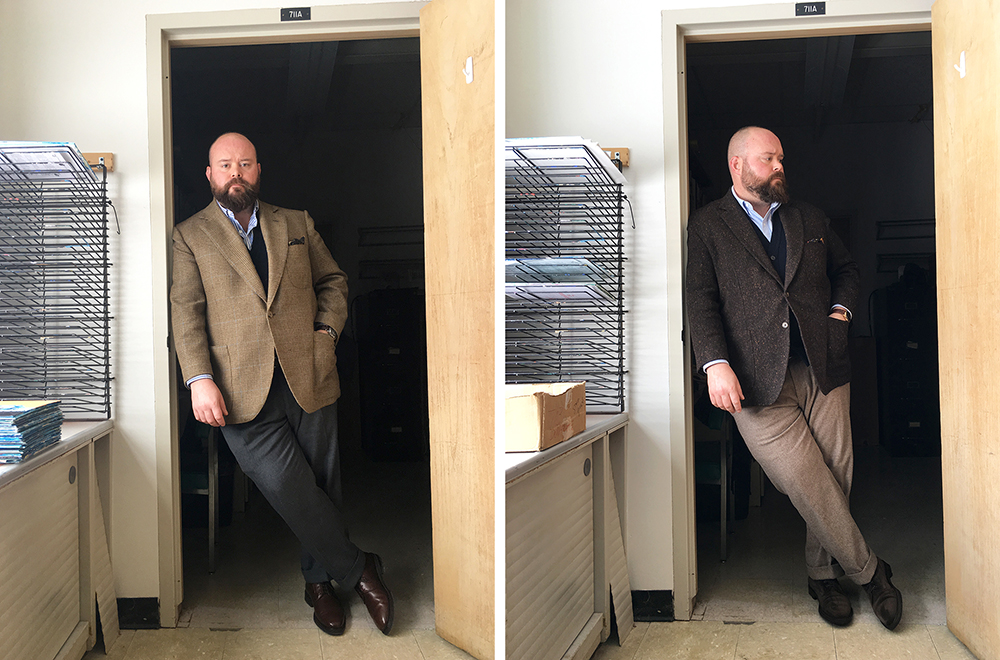
David’s Suggestions for Building a Wardrobe
In the course of our conversion, I ask David here and there if he has suggestions for guys who are just starting to build a better wardrobe. He gave the following tips:
Dressing for Larger Build: “I look for clothes with a classic silhouette — nothing too long or short, wide or skinny. If you know someone who has a good eye for proportions, ask them for their opinion. I have a local seamstress who will tell me when something doesn’t work, saving me time and money. It also sounds silly, but I’ll take photos of myself in a new garment to see how it looks on me. When you’re looking at yourself in the mirror, you do not always see the whole story. So I’ll set up the timer on my cell phone camera and snap a few photos, including the front, back, and side views. I’ll look for whether the garment is pulling anywhere and how the fabric drapes. If there’s tension, especially around the waist, I’ll usually pass — 95% of the time in workwear and 100% of the time in tailoring.
I also want to be comfortable in my clothes, so I like to see how clothes fit for real-life activities, not just standing in front of a mirror. I’ll check to see if a garment is too short when I’m reaching up, or if pants are too short for when I’m bending down. It’s not just about how clothes look on you, but how they make you feel throughout the day.
For bigger guys building a wardrobe, I think the most common mistake is settling. There aren’t many good ready-to-wear options for our build, so when you find something cool that’s close to fitting well, it’s easy to feel like you should buy it. But eventually, you’ll find you’re not comfortable in the item or don’t look good in it, so you sell it for a loss. The other mistake is not taking advantage of your local tailor. Big guys often have to size up, but when they do, the sleeves or legs are too long. Find a local tailor who can take care of these things for you. Lastly, I look for a silhouette that’s flattering and has some shape to it. For tailoring, I like a soft, natural shoulder with no roping, a slight pinch to the waist, and enough room for me to comfortably move around underneath. Trousers should be slightly tapered and have a single break to them. For workwear, I like my clothes to have even more room. I’m OK if there’s even less shape to the silhouette. I want to be able to layer.”
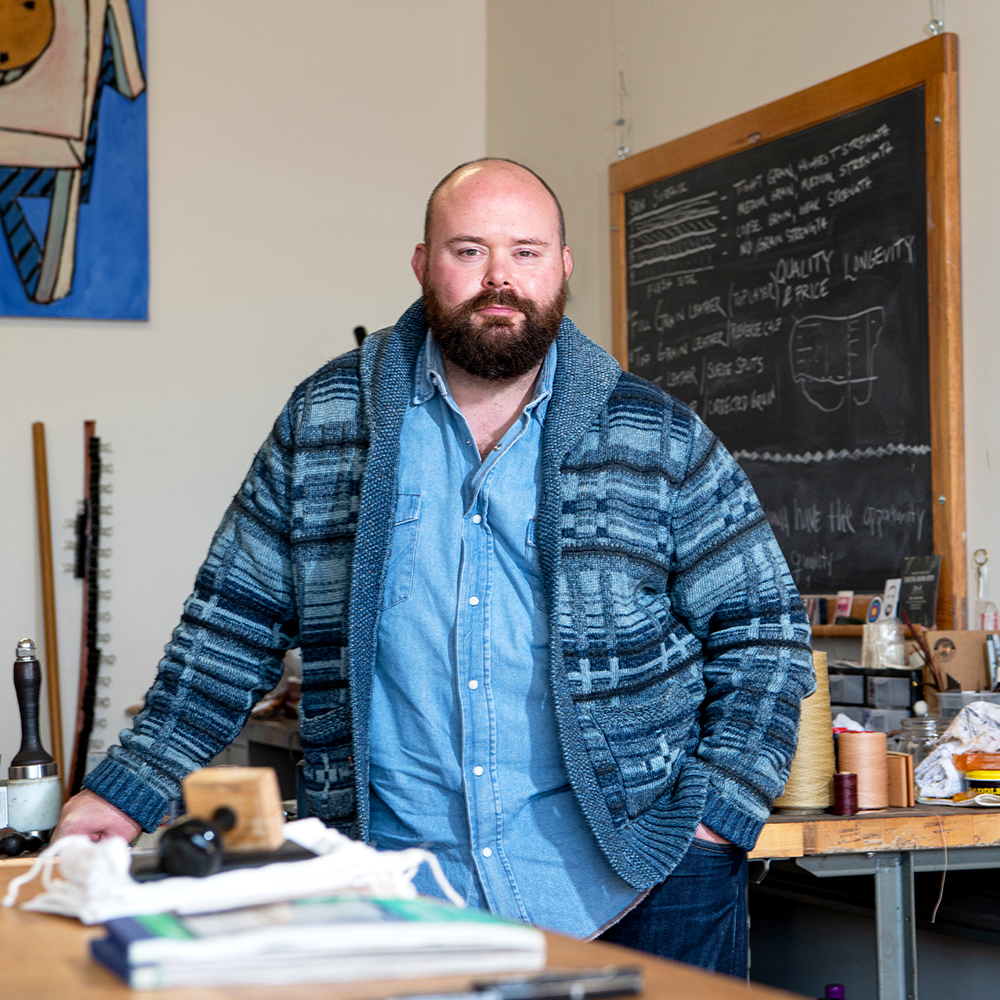

Suggestions for a Capsule Wardrobe: “When you’re starting, resist the temptation of sales. When you shop on sale, you often need to make a compromise, but the truth is that you don’t need that many things to have a good, working wardrobe. For a capsule wardrobe, I would do:
- A grey or navy suit
- A brown tweed with three patch pockets
- An unlined mid-blue summer sport coat in a breathable fabric
- One or two oxford cloth button-down shirts in light blue
- Two to four casual shirts in chambray or denim. Get some with a pocket and some without, and get them in varying shades of blue
- A dress shirt with white and light blue stripes
- A white linen shirt with flapped chest pockets
- Two Shetland sweaters. I would start with navy and dark grey (or one in a color that matches your pet’s hair, if you have one)
- A chunky shawl collar cardigan
- A pair of dark blue jeans
- A pair of mid- or light gray flannels
- A pair of tropical wool trousers in light gray
- A pair of tan cords
- A pair of olive green military-inspired fatigues
- A pair of dark brown suede chukkas or loafers
- Outerwear based on your climate. My most used coat is a navy quilted Barbour.
- Some accessories: a navy knitted hat, a navy cashmere scarf, and a good brown leather belt
Once you have these bases covered, I think you should explore. For me, I would get a third sport coat in a patterned, mid-weight cloth. Again, stick to staple colors, such as navy or brown. I would also get an olive green overshirt or chore coat in cotton or wool, a hand-knit RRL cardigan (get something with an interesting pattern or color), a plaid flannel shirt in red or burnt orange, a pair of black or brown work boots, and a pair of simple white sneakers. A leather coat isn’t a necessity, but it’s a hell of a thing to have. Since I’m bald, I would want a baseball cap in yellow or blue. And finally, I would get a thick pair of brown horn sunglasses and then a solid, time-only mechanical watch — nothing over 40mm.”
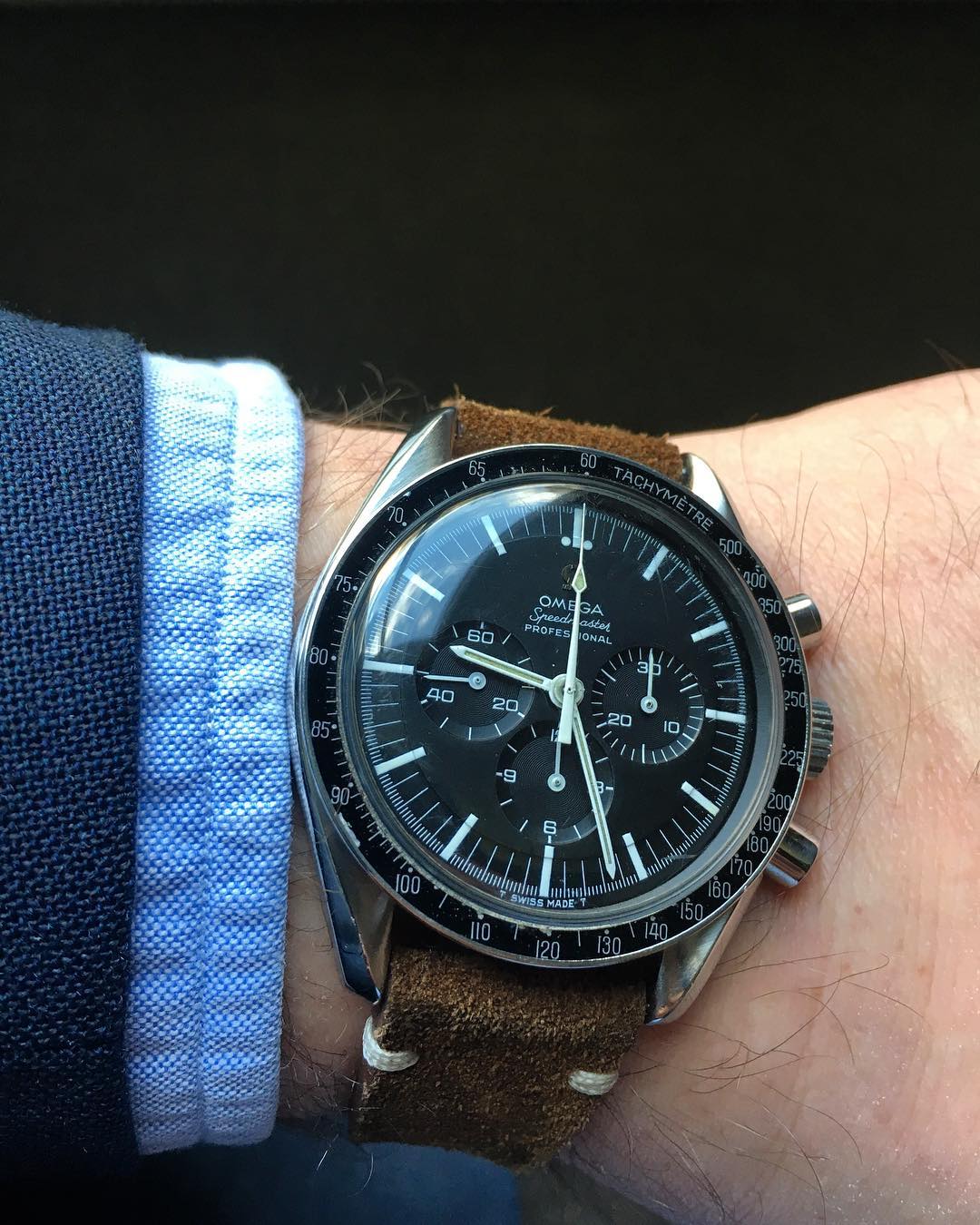
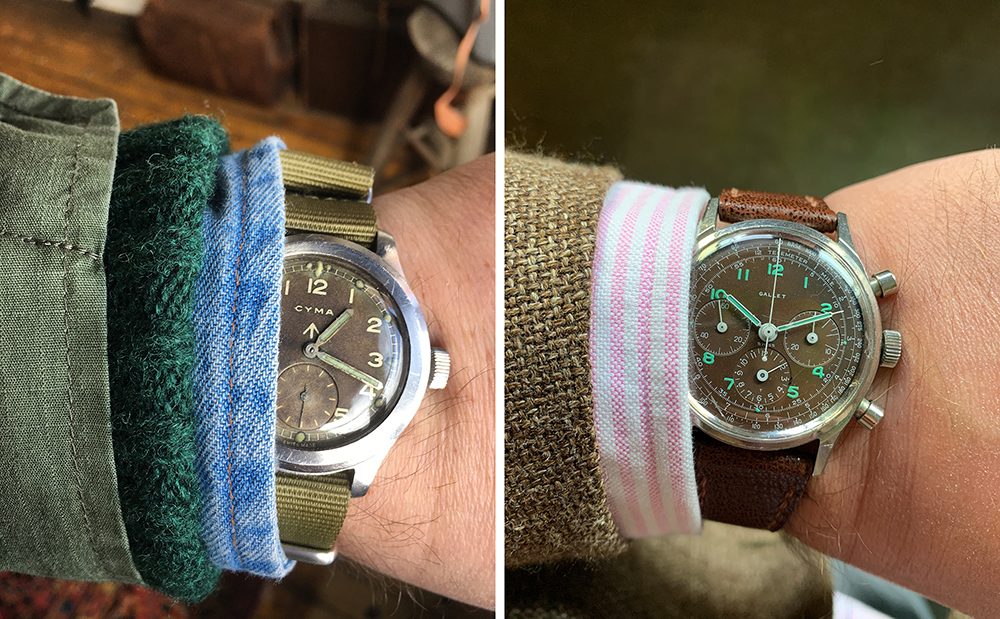
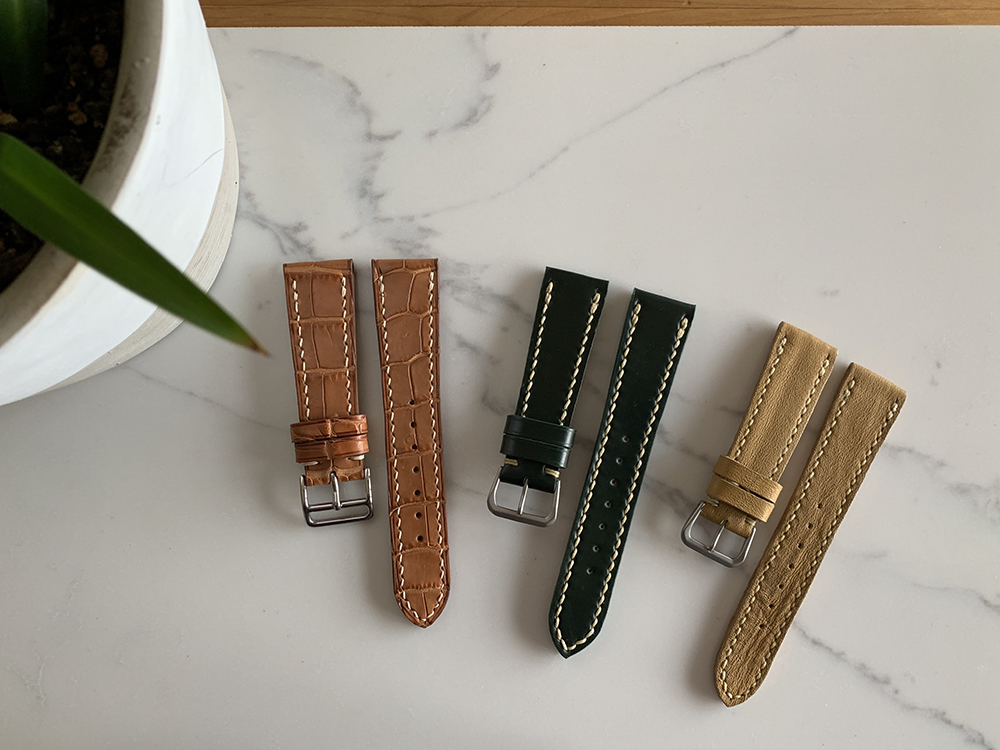
Finding a Watch for Your Wardrobe: “Watches should fit with your wardrobe. I would steer away from the extremes, such as paper-thin, yellow gold Calatravas, or big, chunky, resin-cased watches with 87 functions and a flame thrower. If you buy something too precious, formal, or ‘out there,’ you’ll never wear it. Stick with what you can use. If you travel and wear suits to work, get a solid GMT or Reverso. If you work from home, wear chunky shawl collar cardigans, and make pour-over coffee, get a chronograph so you can time your pours. If you work with your hands, wear jeans and leather jackets, get something such as a field watch, which will look better with scratches and dings. Above all, get a watch you will actually wear and use.
If you have the money for one, I don’t think you can do better than a vintage or modern Rolex Submariner for a one-watch collection. They go well with workwear or tailoring, and they look just as great on a suede or shell cordovan NATO, as they do on a bracelet. If you like that style but want something more affordable, you can get an excellent vintage Skin diver for about $300 and up, depending on the brand. They’re a good size at about 35mm to 38mm, have a unique case shape, squared out lugs, and a rotating bezel. That watch on a simple black or dark brown strap in calfskin or goatskin will pair well with tailoring, while a suede strap or nylon NATO can be used with workwear. There are a ton of them on eBay, and they’re not too expensive to service.
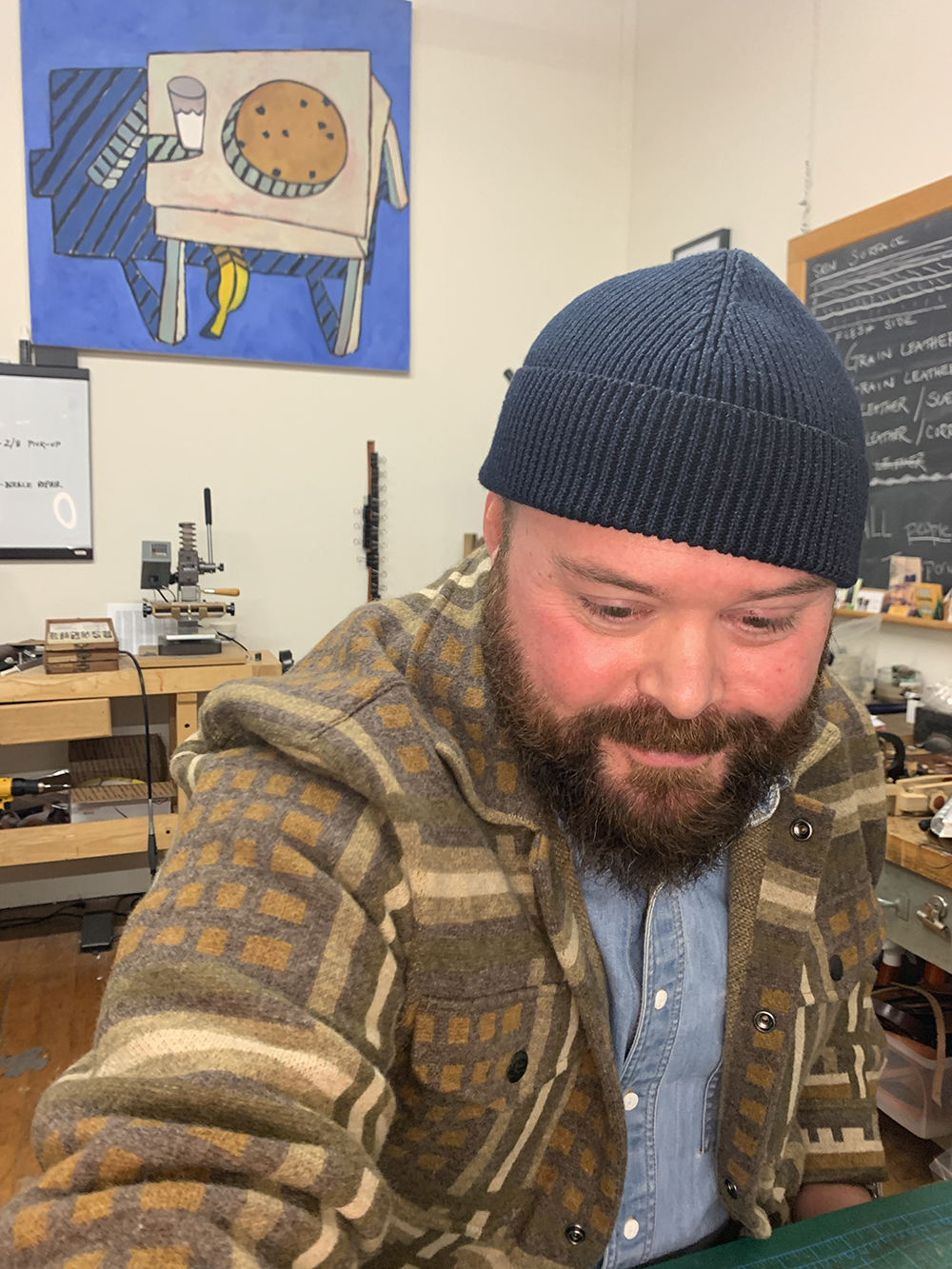
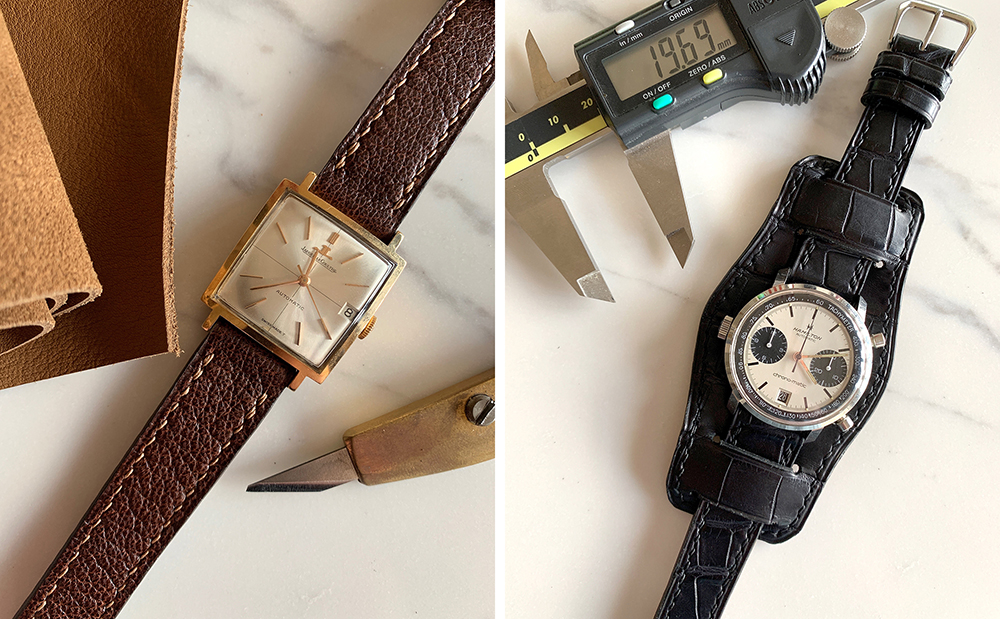
When I’m in workwear, I often wear a vintage Cyma on a canvas strap I made. They look great on leather two-piece straps, nylon NATO straps, mesh bracelets, and everything in between. If you’re not into vintage, you can also get a new field watch. If you often wear suits, however, you should step up the formality in your timepiece. A simple, time-only watch in steel, set with a black or white dial and matte alligator strap, will look great with a tailored suit.”
Take It Slow: “My biggest piece of advice is to take your time. I’ve built my wardrobe over fifteen years, and I only purchase one or two pieces of tailored clothing per year. New shoes get added every year or two; shirts come here and there. It takes a while to find what you like. When I first started, I loved the look of balmoral shoes — loved them. I bought five pairs in different materials, soles, and designs. But even though I loved them, they didn’t make any sense with what I actually wore. I’ve since sold all of them at a considerable loss, except for one pair of balmorals in black. Don’t keep things just became you like them. If they don’t get worn or can’t be tailored to fit, sell them and move on.
As I mentioned earlier, you also want to find a good tailor. Ask them for advice: what are the risks of tapering trousers or letting out a seam? Establish a relationship with your tailor — bring them a small gift, tip them, or be kind and understanding about the jobs you bring in. Oh, and don’t go in when you’re in a hurry. Once my clothes are pinned, I will walk around, go back to the fitting room, and even snap a few photos. Like with shopping, this should be a considered process.”
(photos via Jaiden Tripi Photography, Julia Merrell, and David Lane Design)







